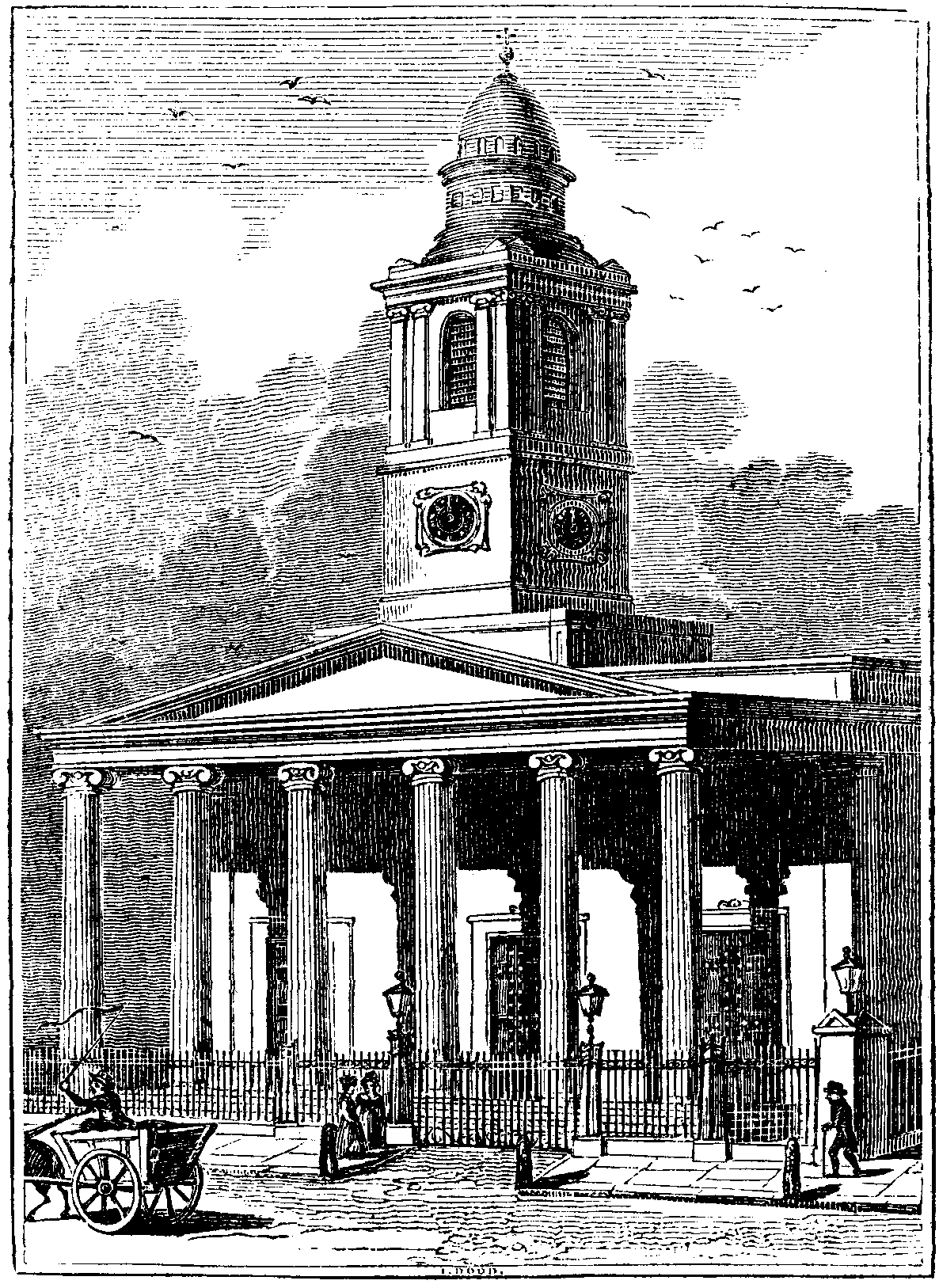and the Project Gutenberg Online Distributed Proofreading Team
THE MIRROR
OF
LITERATURE, AMUSEMENT, AND INSTRUCTION.
| VOL. XIII. NO. 386. | SATURDAY, AUGUST 22, 1829. | [PRICE 2d. |
ST. PETER'S CHURCH, PIMLICO.
The engraving represents the new church on the eastern side of WiltonPlace, in the Parish of St. George, Hanover Square. It is a chastebuilding of the Ionic order, from the designs of Mr. Henry Hakewill, ofwhose architectural attainments we have frequently had occasion to speak.
The plan of St. Peter's is a parallelogram, placed east and west, withoutaisles; the east being increased by the addition of a small chancelflanked by vestries. The west front, in our Engraving, is occupied by anhexastyle portico of the Ionic order, with fluted columns. The floor isapproached by a bold flight of steps, and in the wall, at the back arethree entrances to the church. The columns are surmounted by theirentablature and a pediment, behind which a low attic rises from the roofof the church to the height of the apex of the pediment; it is crownedwith a cornice and blocking-course, and surmounted by an acroterium ofnearly its own height, but in breadth only equalling two-thirds of it;this is finished with a sub-cornice and blocking-course, and is surmountedby the tower, which rises from the middle. The addition of a steeple to aGrecian church forms a stumbling-block to our modern architects, forcingthem to have recourse to many shifts to convert a Grecian [pg 114] temple into anEnglish church, a forcible argument for the rejection of the classicalstyles altogether in this species of buildings.1 Mr. Hakewill has,however, in part surmounted this difficulty, and the effect produced isnot bad, as great value is given to the front elevation by it.
The tower consists of a square in plan, in elevation consisting of apedestal, the dado pieced for the dials of a clock, sustaining a cubicalstory, with an arched window in each face, at the sides of which are Ioniccolumns, the angles being finished in antis. This story is crowned with anentablature, above which rises a small enriched circular temple; the wholeis crowned with a spherical dome, surmounted by a cross.
The body of the church is built of brick, with stone dressings. Theinterior is chastely fitted up. The altarpiece is Mr. Hilton's splendidpicture of "Christ crowned with thorns," exhibited at Somerset House, in1825, and presented to this church by the British Institution in 1827.
The ground for the site was given by Lord Grosvenor, and the sum of5,555l. 11s. 1d. was granted by the Royal Commissioners towards thebuilding. It will accommodate 1,657 persons. The first stone was laidSeptember 4, 1824, and the church was consecrated by the Bishop of London,(Dr. Howley,) July 20, 1827.
